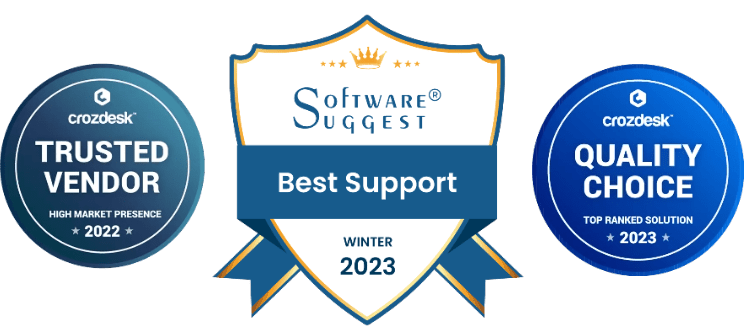Introduction
In today’s digital-first learning landscape, creating high-quality online training content is no longer a luxury – it’s a necessity. Whether you’re a corporate trainer, instructional designer, or education entrepreneur, choosing the right course authoring tools can make or break your eLearning success. With the increasing demand for interactive and scalable digital learning, course authoring software has evolved into a cornerstone of modern eLearning.
This blog explores the best course authoring tools in 2025, their standout features, benefits, use cases, and more. It also dives into how these tools serve different industries and how to choose the right one for your learning objectives.
If you’re searching for online course authoring tools, free course authoring tools, or simply want to compare course authoring software reviews, you’re in the right place.
What Are Course Authoring Tools?
Course authoring tools are software applications used to design, develop, and publish educational or training content. These tools simplify the creation of multimedia-rich eLearning modules, often without requiring advanced coding skills. They empower educators and organizations to develop custom courses tailored to specific learning objectives.
Key Capabilities:
- Drag-and-drop interfaces
- Quizzes and assessments
- Interactive simulations
- Video and audio embedding
- SCORM/xAPI compliance for LMS integration
Features to Look for in Course Authoring Tools
When evaluating the best course authoring tools, it’s important to look beyond just user-friendliness. The following features will help ensure your eLearning content is engaging, scalable, and effective.
User-Friendly Interface
Responsive Design
Responsive Design
This ensures your course can be integrated and tracked in various LMS platforms.
It allows data exchange between the authoring tool and LMS, enabling detailed learner analytics.
Customizable Templates
Speed up the design process while maintaining brand consistency.
Pre-built layouts allow even non-designers to create professional-quality content.
Collaboration Tools
Analytics and Reporting
Enable multiple authors and reviewers to work together in real time. This helps accelerate feedback loops and streamlines the course development process.
Multimedia Support
Support for animations, simulations, voiceovers, and videos. Rich AI media elements enhance learner engagement and make complex topics easier to understand.
Benefits of Using E Learning Course Authoring Tools
Speed and Efficiency
These solutions enable the rapid creation of high-quality learning content using built-in templates and intuitive design interfaces. They eliminate the need for advanced technical skills, allowing teams to develop and launch training modules more quickly and efficiently, reducing overall time-to-market.
Cost-Effectiveness
By enabling in-house course development, organizations can significantly reduce their reliance on external vendors. This approach lowers training expenses and is especially beneficial for startups or small businesses operating on tight budgets.
Consistent Branding
Scalability
Enhanced Learner Engagement
Incorporating multimedia elements, interactivity, and gamified features keeps learners motivated and involved. Features like quizzes, videos, and interactive scenarios contribute to higher completion rates and better knowledge retention.
Personalized Learning
Advanced features allow for adaptive learning paths and branching scenarios tailored to individual roles, skill levels, or preferences. This ensures each learner receives content suited to their unique needs, resulting in a more impactful and personalized learning journey.
Best Course Authoring Tools in 2025
Here are the top course authoring software options making waves in 2025, including both paid and free course authoring tools:
CogniSpark AI
CogniSpark AI is an innovative, AI-powered eLearning authoring tool designed to revolutionize how digital learning content is created. By harnessing the power of artificial intelligence, CogniSpark AI streamlines course development through automated content generation, intelligent media suggestions, and adaptive learning pathways
Whether you’re a training manager, instructional designer, or educator, this tool enables faster, smarter, and more personalized course creation without compromising on quality. It’s especially ideal for organizations looking to scale their eLearning initiatives efficiently while maintaining high engagement and learner outcomes.
Articulate 360
Ideal for creating highly interactive and responsive eLearning content, this cloud-based authoring tool offers a vast library of templates and assets, accelerating course development while enhancing visual appeal. It supports seamless multimedia integration and branching scenarios to deliver immersive learning experiences. The platform enables rapid content creation through responsive, web-based templates—perfect for teams seeking flexibility and efficiency.
Adobe Captivate
Perfect for designing immersive simulations and technical courses. Supports mobile-first and adaptive learning paths for modern learners. Captivate’s features include 360-degree media support, interactive video, and software simulation capabilities. It also allows for fluid box-based responsive design for a consistent learning experience across all devices.
iSpring Suite
Great for teams familiar with PowerPoint who want to convert presentations into engaging courses quickly. Integrates easily with most LMS platforms. It offers features like quizzes, dialogue simulations, and screencasting. The suite ensures SCORM and xAPI compatibility, making it a reliable choice for formal eLearning environments.
Elucidat
Ideal for large teams working on collaborative eLearning projects, this web-based authoring tool enables rapid deployment and centralized control over brand elements. With user permissions and reusable templates, it ensures content consistency across modules. The built-in analytics dashboard offers valuable learner insights, making it perfect for global training initiatives that demand both speed and scalability.
Easygenerator
Enables subject matter experts (SMEs) to create quality eLearning without design or coding skills. Supports real-time feedback and learner tracking. It features drag-and-drop functionality and built-in quizzes. Easygenerator also supports xAPI and SCORM exports, making it compatible with various LMS platforms.
Adapt Learning
Designed for tech-savvy teams who prefer customization. Offers flexibility and control over course design for tailored learning experiences. Adapt delivers content using a modular framework and supports a plugin ecosystem for extended functionality. It is ideal for development teams comfortable with front-end coding.
H5P
Excellent for creating bite-sized, interactive learning elements that integrate seamlessly with LMSs. Widely used in educational settings. It supports over 40 content types, including interactive videos, quizzes, timelines, and presentations. H5P can be embedded in WordPress, Moodle, and Drupal for versatile deployment.
Online Course Authoring Tools for Different Use Cases
Different learning goals and organizational needs call for tailored solutions. Whether you’re designing corporate training or classroom content, the best course authoring tools offer specialized features that make learning more impactful, scalable, and personalized.
For Corporate Training:
The ability to quickly update content and track learner progress ensures consistency and compliance across departments. Scalability and integration with existing systems like HR tools or LMS platforms make these solutions ideal for enterprise environments.
For Higher Education:
Educational institutions benefit from eLearning course authoring software that enables simulation-based learning, video integration, and compatibility with major LMS platforms. These tools enhance engagement and allow for a more immersive learning experience.
Support for quizzes, branching scenarios, and multimedia elements help faculty deliver blended and flipped classroom models. Cloud-based access also allows students to learn asynchronously across various devices, enhancing accessibility and retention.
For NGOs or Nonprofits:
With limited budgets, free course authoring tools or open-source platforms are ideal. They offer cost-effective ways to build and distribute training content while encouraging collaborative development and broad accessibility.
These tools allow teams to build impact-driven content with minimal technical expertise. Their flexibility helps in creating multilingual, region-specific courses, making them especially useful for field-level training and awareness campaigns.
For NGOs or Nonprofits:
Independent designers look for course authoring software that combines speed and creative control. Features like PowerPoint-based editing, reusable content blocks, and built-in assessments help deliver client-ready content efficiently.
Access to customizable templates, drag-and-drop functionality, and responsive design capabilities saves time while maintaining professional quality. Freelancers can also benefit from software with analytics features to showcase learner outcomes to clients.
For K–12 Schools:
Schools require intuitive and accessible online course authoring tools that cater to younger learners. Tools with drag-and-drop functionality, gamified elements, and strong platform compatibility are essential for modern classroom environments.
Features like interactive quizzes, story-based learning, and visual-rich templates keep students engaged. Teachers can easily update content, monitor student progress, and align lessons with curriculum standards—all without needing technical expertise.
For Product Training:
Schools require intuitive and accessible online course authoring tools that cater to younger learners. Tools with drag-and-drop functionality, gamified elements, and strong platform compatibility are essential for modern classroom environments.
These tools often include built-in simulations, real-time feedback, and microlearning modules for better retention. They are particularly effective in reducing customer support queries, shortening sales cycles, and boosting product adoption rates.
Final Thoughts
Choosing the right course authoring software can drastically enhance your training outcomes. From compliance training in corporations to interactive lessons in schools, today’s online course authoring tools cater to all kinds of learning scenarios. Evaluate your use case, budget, and learner needs carefully when selecting your tool.
Whether you’re looking for robust features, easy collaboration, or a cost-effective solution, there’s something for everyone in our list of the best course authoring tools.
Table of Contents
FAQ
Start by identifying your training goals, audience, budget, and technical expertise. Corporate teams may prioritize compliance features and LMS integration, while educators might look for multimedia support and quiz creation tools. The best course authoring tools align with your specific use case.
Absolutely. Many eLearning course authoring software options are designed for non-technical users. They often include drag-and-drop editors, pre-built templates, and WYSIWYG interfaces for easy content creation.
Higher ed institutions benefit from simulation-based learning, multimedia integration, and compatibility with LMS platforms. These features support blended learning models and create more immersive, student-centered experiences.
For product training, prioritize features like screen recording, simulations, scenario-based learning, and real-time feedback. These help users understand functionality, troubleshoot issues, and retain information faster.
Modern course authoring tools come with responsive design support, allowing learners to access content across devices—smartphones, tablets, and desktops. This is especially important for corporate training and field-level nonprofit education.
Yes, cloud-based authoring tools with collaboration features and centralized content management are best for scaling. They allow multiple stakeholders to contribute and update content while ensuring brand and compliance consistency.



















